Boer Republics
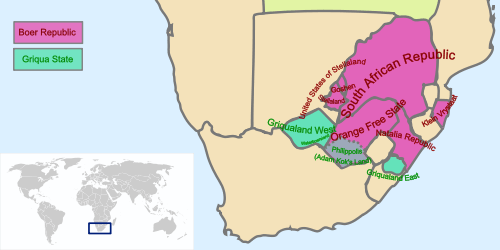
The Boer Republics (sometimes also referred to as Boer states) were fiercely independent, Protestant, self-governed republics created by the Dutch-speaking inhabitants of the Cape Province and their descendants, variously named Trekboers, Boers and Voortrekkers in mainly the middle, northern and north eastern and eastern parts of what is now the country of South Africa. Two of the Boer Republics achieved international recognition and complete independence: the South African Republic (ZAR or Transvaal) and the Orange Free State.
History
The United Kingdom took over from the Netherlands as the colonial power at the Cape of Good Hope in 1806. Subsequently, a number of its Dutch-speaking inhabitants trekked inland, first in smaller numbers, then in groups as large as almost a hundred people,[1] after 1834 even in groups of hundreds. There were many reasons why the Boers left the Cape Colony; among the initial reasons were the language laws. The British had proclaimed the English language as the only language of the Cape Colony and prohibited the use of the Dutch language.[2] As the Bible, churches, schools and culture of many of the settlers were Dutch, this caused a lot of friction. Britain abolished slavery in 1834 and allocated the sum of 1,200,000 British pounds as recompense for the Dutch settlers' slaves. The Dutch settlers disputed the requirement that they had to lodge their claims in Britain and that the value of the slaves was many times the allocated amount. This caused further dissatisfaction among the Dutch settlers.[1]:199 The settlers believed incorrectly that the Cape Colony administration had taken the money due to them as payment for freeing their slaves. In truth, the allocated money was simply too little to cover even half of the claims.
South African Republic
In 1835, one of the large groups of Boers arrived at the Vet river. Louis Trichardt and Jan van Rensburg split off from Hendrik Potgieter's group, and continued on to establish Zoutpansberg. Potgieter's group remained at the Vet river and founded a town called Winburg.[1]:222
The establishment of the South African Republic had its origins in 1837 when the commandos of Potgieter and Piet Uys defeated a Matabele raiding party of Moselekatse and drove them back over the Limpopo river. Potgieter declared the lands north and south of the Vaal river as Boer lands.[1]:224 Boers started settling on both sides of the Vaal river and in March 1838, Potgieter, Uys and the men of their commando provided relief to Gerrit Maritz, and early in April 1838, Uys and his son were killed. During April 1838 Potgieter returned to the area north of the Vaal river and founded the town of Potchefstroom.[1]:225 At this time, this new country included the area north (Potchefstroom) and south (Winburg) of the Vaal river.
In 1848 the British Governor of the Cape, Sir Harry Smith, issued a proclamation declaring British sovereignty over all the lands to the north and to the south of the Vaal river.[1]:230 Commandant-General Andries Pretorius led the commandos against the British forces later that year, at the battle of Boomplaats, near Smithfield. The Boer commandos were defeated and General Pretorius and the remainder of his men fled north across the Vaal river. The Volksraad from Winburg was transferred to Potchefstroom and the South African Republic was established as the name of the new country.[1]:231
Independence of South African Republic
The people north of the Vaal River in the South African Republic were recognized as an independent country by Great Britain with the signing of the Sand River Convention on 17 January 1852.[3]:357–359
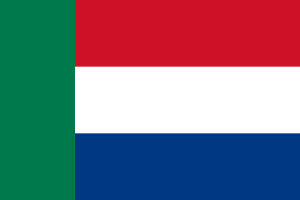
Transvaal Civil War
Natalia Republic
In April 1837, a party under leadership of Piet Retief arrived in Thabanchu. In June 1837, in Winburg, the newly elected Boer Volksraad appointed Piet Retief as Commandant-General. An argument between Maritz and Potgieter, both elected to the Volksraad, led to a split. Maritz and Piet Retief decided to secede from the Potgieter- and Uys-led Boer country. The Boers under the leadership of Piet Retief obtained a treaty from Zulu King Dingane to settle part of the lands the Zulus administered or held sway over, but Dingane later changed his mind, killing Retief and 70 members of his delegation. Dingane's impis (Zulu warriors) then killed almost 300 Boers who had settled in the Natal region.
After Pretorius was recruited to fill the leadership vacuum created by the deaths of Piet Retief and Maritz, he offered to negotiate for peace with Dingane if he were to restore the land he had offered to Retief.[4] Dingane responded by attacking the Voortrekkers; on 16 December 1838 the battle of Nacome River (later named the Battle of Blood River) occurred, during which 300 Voortrekkers survived and won a decisive battle against thousands of Dingane's impis.
The Natalia Republic was established in 1839 by the local Boers after Pretorius entered into an alliance with Mpande, the new Zulu king.
Orange Free State
In June 1852 a public meeting was held in Bloemfontein where all the European people voted on a resolution whether to pursue independence or remain under British rule. The vast majority of people voted to remain under British rule. Sir Harry Smith, however, had instructions to hand the country over to the Boers. In 1853, Sir George Clerk was sent as special commissioner to give up the land and to establish self-rule.[1]:232 16,000 people sent a delegation of representatives to inform Clerk that the people wished to remain governed by Britain. Clerk however had clear instructions to establish self-rule, and with a minority Boers represented by J.H. Hofmann, agreed to a convention of independence.[1]:233
Independence of the Orange Free State
The Orange Free State was recognized by Great Britain on 17 February 1854. The Orange Free State became independent on 23 February 1854 with the signing of the Bloemfontein or Orange River Convention. The Orange Free State was nicknamed "the model republic".

Other republics
New Republic
The New Republic (comprising the town of Vryheid) was established in 1884 on land given to the local Boers by the Zulu King Dinuzulu, the son of Cetshwayo, after he recruited local Boers to fight on his side. The Boers were promised and granted land for their services and were led by Louis Botha who would go on to prominence during the second Anglo-Boer War. This republic was later absorbed into the Transvaal/South African Republic.
Goosen (Goshen)
Located in an area of Bechuanaland, west of the Transvaal, the State of Goshen existed as an independent nation for a short period: from 1882-1883 as the State of Goshen and, after unification with neighbouring Stellaland, as the United States of Stellaland (Dutch: Verenigde Staten van Stellaland) from 1883–1885.
Griqualand
States were also established by other population groups, most notably the Griqua, a subgroup of South Africa's heterogeneous and multiracial Coloured people. Most notable among these were Griqualand West and Griqualand East.
Boer countries
The Transvaal and the Orange Free State developed into successful independent countries which were recognized by the Netherlands, France, Germany, Belgium, the United States, and Britain.[5] These two countries continued to exist for several decades, despite the First Boer War with Britain. However, later developments, including the discovery of diamonds and gold in these states, led to the Second Boer War. In this war, the Transvaal and Orange Free State were defeated and annexed by the overwhelmingly larger British forces, ceasing to exist on 31 May 1902, with the signing of the Treaty of Vereeniging. A new British colony, the Union of South Africa, was established, in which the Transvaal and the Orange Free State became provinces along with the Cape and Natal.
Religion
The Boer Republics were predominately Protestant due to their Dutch heritage, and this played a significant role in their culture. Religion was so important to the ZAR nation that its constitution specifically did not provide separation between church and state.[3] It disallowed franchise (citizenship) to anyone not a member of the Dutch Reformed Church. In 1858 these clauses were altered in the constitution to allow for the Volksraad to approve other Dutch Christian churches. Members of the Catholic church and other Christian churches were not allowed to become citizens of the ZAR.[3]:358–359
Land claim
On 24 April 2014, political party Front Nasionaal (FN) submitted a land claim to the Land Claims Commissioner in Pretoria on behalf of the Afrikaner nation. The claim pertains to the land described in National Archives of South Africa R117/1846: "From Ohrigstad to the north till the Olifantsrivier, then downwards to the Delagoa Bay line; to the south till the Crocodile River; to the west to Elandspruit till the 26 degrees line; east till where the Crocodile River joins the Komati River."[6] FN states that the sale of said land was between King Masous (representative of the Zulu) as seller; and Commandant SJZR Burg (representative of the Dutch South African nation) as buyer. A copy of the agreement is filed in the Government Archives under file R117/46. FN further states that the land was legally bought and paid for on 25 July 1846 as an ethnic group and not as individual landowners and was only in custodianship of the pre-1994 government as they were regarded as descendents of the ethnic group. There was therefore no legal right to hand this land over to a "foreign" government in April 1994 and away from the original ethnic group.[7] The new land claims process has not yet been finalised however.[8][9][10]
List of Griqua states and Boer republics in Southern Africa
Boer republics
 Republic of Swellendam (1795)
Republic of Swellendam (1795) Republic of Graaff-Reinet (1795-1796)
Republic of Graaff-Reinet (1795-1796) Zoutpansberg (1835-1864)
Zoutpansberg (1835-1864) Winburg (1836-1844)
Winburg (1836-1844) Potchefstroom (1837-1844)
Potchefstroom (1837-1844) Natalia Republic (1839-1843)
Natalia Republic (1839-1843) Winburg-Potchefstroom (1844-1848)
Winburg-Potchefstroom (1844-1848) South African Republic (1852–1877, 1881–1902, 1914–1915) often informally known as the Transvaal Republic
South African Republic (1852–1877, 1881–1902, 1914–1915) often informally known as the Transvaal Republic Utrecht Republic (1854-1858)
Utrecht Republic (1854-1858) Orange Free State (1854-1902)
Orange Free State (1854-1902) Lydenburg Republic (1856-1860)
Lydenburg Republic (1856-1860) Klein Vrystaat (1876-1891), literally Little Free State
Klein Vrystaat (1876-1891), literally Little Free State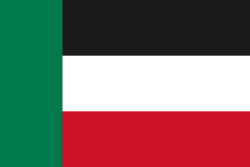 State of Goshen (1882-1883)
State of Goshen (1882-1883).svg.png) Republic of Stellaland (1882-1883)
Republic of Stellaland (1882-1883).svg.png) United States of Stellaland (1883-1885)
United States of Stellaland (1883-1885)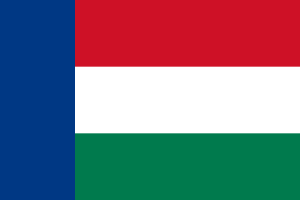 New Republic (1884-1888)
New Republic (1884-1888)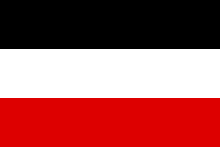 Republic of Upingtonia/Lijdensrust (1885-1887)
Republic of Upingtonia/Lijdensrust (1885-1887)
Griqua states
 Griqualand East (1862–1879) officially known as New Griqualand
Griqualand East (1862–1879) officially known as New Griqualand- Griqualand West (1870-1871)
- Philippolis/Adam Kok's Land (1826-1861)
- Waterboer's Land (1813-1871)
See also
References
- 1 2 3 4 5 6 7 8 9 D. Fairbridge (1918). History of South Africa (PDF). pp. 220–221.
- ↑ Kachru, Braj; Kachru, Yamuna; Nelson, Cecil (2009). The Handbook of World Englishes. John Wiley & Sons. pp. 160–161. ISBN 1405188316.
- 1 2 3 Eybers (1917). Select_constitutional_documents_illustrating_South_African_history_1795-1910. pp. 367–368.
- ↑ The Great Boer Trek. Stephen Crane. Archived February 10, 2003, at the Wayback Machine.
- ↑ The Story of the Boers. C. W. Van Der Hoogt. Chapter: A Century of Injustice. Page 96.
- ↑ Land claim submission for old Boer Republic land-rights 24 April 2014
- ↑ Largest Land Claim in South Africa: old Boer Republic
- ↑ "Land restitution bill passed after heated debate". News24. 25 February 2014. Retrieved 16 June 2014.
- ↑ "Front Nasionaal hands in massive land claim". SABC Digital News. 25 April 2014. Retrieved 16 June 2014.
- ↑ Vermaak, Narda (15 May 2014). "Party is upfront about its land claim". Steelburger. Archived from the original on 16 June 2014. Retrieved 16 June 2014.